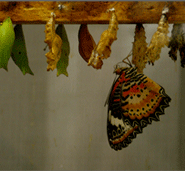“When a man rides a long time through wild regions he feels the desire for a city. Finally he comes to Isidora, a city where the buildings have spiral staircases encrusted with spiral seashells, where perfect telescopes and violins are made, where the foreigner hesitating between two women always encounters a third, where cockfights degenerate into bloody brawls among the bettors. He was thinking of all these things when he desired a city. Isidora, therefore, is the city of his dreams: with one difference. The dreamed-of city contained him as a young man; he arrives at Isidora in his old age. In the square there is the wall where the old men sit and watch the young go by; he is seated in a row with them. Desires are already memories.” -Italo Calvino, Invisible Cities.
And he traveled on, and he became a tinier square, a mere window into somewhere else. Perhaps into a future that he might have inhabited, in a place he is yet to arrive, with a person he has never met. And the squarer he became, the more things seemed to go in circles. Again and again, over and over.
From the things that always existed, such as the sun and the moon, the crystals under the ocean and snowflakes and leaves, DNA and bubbles to the things that we have created such as balloons and bagels and gates, zippers, hourglasses, compasses, pliers and chairs, everything begins to assume a shape. Some of these shapes remain elusive to us, or mould as they go, and others are definite.
But these elements come to represent the structures--visible or unseeable--within which we live. They begin to shape our lives. Then they open up, crumble, losing their character. Often their essence is indivisible, and they reform. But this time, they are contaminated, like medicine that is touched by the hand. The stories in this issue sprout from this point: the point at which these structure break down and become symbols for something else.
As it happened, each author in our current issue viewed the circle as a kind of utopia, an arrival of perfection, constant and equidistant from its centre, interior and exterior, simultaneously. The square, then, becomes a box through which we view the circle: be it through the image itself or through our computer screens or in a book or as a photograph.
The point of alarm, hilarity, spirituality and creativity, then, is not simply in the circle itself, but in the reminiscience or the desire for the lost or the anticipated circle. And thus does the circle comes full circle, as it becomes, simultaneously, as a zero and a whole.
The stories begin from the beginning: J McDonald, a wanderer of the world and eco-architect reminisces about the days when man lived in circular structures and seems to propose that perhaps returning to the old ways from the standardization of today might be good for the soul.
Avni Doshi's fictionalized take on the cacophony of Aditya Pande's circles and semi circles in tangent pulls taut the celestial and the corporeal.
Next, Nora Wendel, an environmental designer, creates an ethereal audio installation explaining the Hindu Yantra. Through sound, we reach dreams of just being born, or dying in sleep, or breathing or floating in deep water. Or finding stillness in a maze, all through the dot, and its extension into a circle and a square. We return to the essential belly button of human existence.
And we end at the end, that is the beginning with Charu Maithani's theory, best understood through the conceptual videos of Abhishek Hazra, on how the zero and its representation of failure might in fact be its success.
And then he became a spinning square, spiraling into an imperfect city where everybody was a square, but the square twisted and bent into triangles and hexagons and pentagrams and quadrangles and they curved outward from the centre, and suddenly, he realized that this was the city of his dreams, created not by what it was, but what it is now, after the cyclone.
Elusively,
Himali.
Editor's Note.
Every sunbeam, every strain of music, every sapling and starfish is ultimately the regeneration of a previous something, a collection of somethings, taking on new shape. At the most indivisible level we can comprehend, all life is nothing more than atoms and molecules dancing their way through various forms. And if everything comes from something, it stands to reason that everything must go to something as well.
Read More
Illusion: Seeing Beyond Seeing
Meaning: In Search of Significance.
Melody: A Different Tune
Rhythm: Ordering Time


